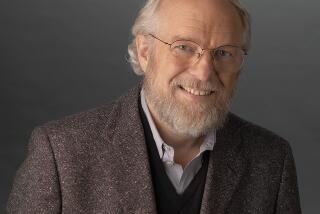Players in the Software Revolution
- Share via
Computer science, along with its unruly stepchild the computer industry, can be said to have finally reached its maturity when software displaced hardware as the focal point of system design. The period of transition can be roughly pinpointed as the 10 years starting in 1972, a decade that saw the decline of the closed commercial systems exemplified by IBM mainframes and the rise of the personal computer--a product pioneered, but scarcely dominated, by that same IBM.
For most of the period preceding the PC’s birth, the software inside any particular computer was inextricably entwined with its hardware. If you acquired an IBM mainframe, you were stuck with its programming too. There was a competitive reason behind this: Any corporate customer, having spent millions of dollars and countless years training its work force on the peculiarities of IBM programming, would be correspondingly reluctant to replace its computers with machines from, say, Honeywell or Burroughs and suffer the whole painful process anew.
The PC killed this model. Computer makers such as Apple, Compaq and IBM’s PC division recognized that the key to success was not in machines that ran one flavor of software alone but in those that could accept the widest variety of independently developed programs. It’s no coincidence that the independent software-design industry came into being only after the appearance of the PC or that Microsoft, supplier of the IBM PC’s first rough-hewn operating system, became that industry’s most successful company.
Of course, the idea that a computer might be infinitely adaptable was not new to the late 20th century. In 1936 the mathematician Alan Turing posited what became known as the universal Turing machine. His idea was that, given the proper internal instructions, any calculating machine could emulate the functions of any other; a single machine could calculate the trajectory of a missile or the distribution of prime numbers. Thus the notion was born of a machine that held not only raw information but the programmed instructions on how to manipulate it. It was a powerful and historic idea; we all have universal Turing machines on our desks today.
The history of software as the driver of this transformation is the subject of Steve Lohr’s ambitious book “Go To.” The scale of the subject, as of any topic so large and all-encompassing, has forced the author to make choices, some of which are debatable. Turing, the great tragic genius of software theory whose work marked a turning point in computer science, gets only a few paragraphs. The intricacies of software code in its evolution from FORTRAN to Linux often preoccupy the author at the expense of the social and economic ramifications of its deployment--odd, given that Lohr so ably covered the Microsoft antitrust trial, at which those ramifications occupied center stage, for the New York Times.
Only a few of the creators of the various programming environments chronicled by Lohr come alive as individuals--among them James Gosling and Richard Stallman, the apostles, respectively, of Java and the open-source program GNU. For these reasons, although “Go To” might appeal to the software aficionado curious about the genesis of his C++ or Linux, the general reader is likely to find it comparatively hard sledding.
The importance of software remains inescapable today, however. As companies from Compaq to Hewlett-Packard and Gateway have discovered, it’s difficult to maintain a dominant competitive position by selling beige boxes filled with generic circuitry; on the other hand, if you own the operating system that gives those circuits their inner life and allows them to interact with one another and with their uses, you can be Microsoft and bend competitors, judges and even federal prosecutors to your will.
*
Michael Hiltzik is the author of “Dealers of Lightning: Xerox PARC and the Dawn of the Computer Age” and is a Times staff writer.







